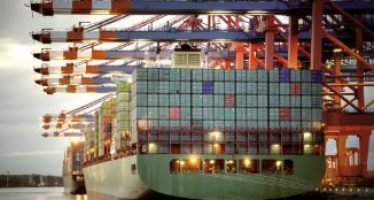Africa: End of the Commodity Super-Cycle Weighs on Growth
 Sub-Saharan Africa’s growth will slow in 2015 to 4.0 percent from 4.5 percent in 2014, according to World Bank projections released today.
Sub-Saharan Africa’s growth will slow in 2015 to 4.0 percent from 4.5 percent in 2014, according to World Bank projections released today.
This downturn largely reflects the fall in the prices of oil and other commodities, notes Africa’s Pulse, a twice-yearly World Bank Group analysis of the issues shaping Africa’s economic prospects released today at the start of the World Bank Group’s 2015 Spring Meetings, which will draw the world’s finance and development ministers to Washington, DC, for talks on the state of the global economy and international development.
The 2015 forecast is below the 4.4 percent average annual growth rate of the past two decades, and well short of Africa’s peak growth rates of 6.4 percent in 2002-08. Excluding South Africa, the average growth for the rest of Sub-Saharan Africa is forecast to be around 4.7 percent.
“Despite strong headwinds and new challenges, Sub-Saharan Africa is still experiencing growth. And with challenges come opportunities,” says Makhtar Diop, World Bank Vice President for Africa. “The end of the commodity super-cycle has provided a window of opportunity to push ahead with the next wave of structural reforms and make Africa’s growth more effective at reducing poverty.”
African Exports Still Dominated by Primary Commodities
Sub-Saharan Africa is a net exporter of primary commodities. Oil is the most important commodity traded in the region, followed by gold and natural gas. Over ninety percent of the total exports of eight major oil-exporting countries come from the three biggest exports of each country, which represent nearly 30 percent of their GDP. But the recent price declines are not confined to oil, and Africa’s Pulse reveals that the prices of other commodities are now more closely correlated both with oil prices and with one-another. As a result, terms of trade are declining widely among most countries in the region. The 36 African countries with expected terms-of-trade deterioration are home to 80 percent of the population and 70 percent of the economic activity in the region.
“Despite strong headwinds and new challenges, Sub-Saharan Africa is still experiencing growth. And with challenges come opportunities.”
– Makhtar Diop, World Bank Vice President for Africa
That said, the continent’s huge economic diversity is also mirrored in the impact of commodity price declines – even among oil producers. In Nigeria, for example, although the economy will suffer this year, growth is expected to rebound in 2016 and beyond, driven by a relatively diversified economy, and a buoyant services sector. Low oil prices will continue to weigh down on prospects of less diversified oil exporters such as Angola and Equatorial Guinea. In several oil-importing countries, such as Cote d’Ivoire, Kenya and Senegal, growth is expected to remain strong. In Ghana, still high inflation and fiscal consolidation will weigh on growth. In South Africa, growth continues to be curtailed by problems in the electricity sector.
Foreign direct investment inflows were subdued in 2014, reflecting slower growth in emerging markets and declining commodity prices. African countries continue to tap international bond markets to finance infrastructure projects: Cote d’Ivoire returned to the market this February; and Ethiopia had a debut issue in December 2014. Although debt burdens remain generally manageable, debt-to-GDP ratios for countries with increased bond market access have picked up in recent years. Uncertainty about future global monetary conditions are an additional reason for caution.
“As previously forecast, external tailwinds have turned to headwinds for Africa’s development. It is in these challenging times that the region can and must show that it has come of age, and can sustain economic and social progress on its own strength. For starters, recent gains for the poorest Africans must be protected in those countries where fiscal and exchange rate adjustments are needed.” says Francisco Ferreira, the World Bank’s Chief Economist for Africa.
New and Old Risks to Africa’s Economic Future
Persistent conflict in a number of areas, and recent violence by extremist groups such as Boko Haram and Al Shabaab pose security risks with the potential to undermine development gains. Also, the Ebola outbreak in Guinea, Liberia, and Sierra Leone has highlighted preexisting weaknesses in the health systems of the three most affected countries, as well as others.
Although substantial progress has been made against the Ebola epidemic, it remains premature to declare victory until there are zero cases left. A World Bank study released in January estimated that the three hardest-hit countries (Guinea, Liberia and Sierra Leone) will face at least $1.6 billion in forgone economic growth in 2015, and social costs in terms of nutrition, health and education are equally severe. The Bank Group has mobilized about $1 billion in financing to date for the three countries hardest hit by Ebola.
Policy Challenges Remain
The fiscal policy stance is expected to remain tight throughout 2015 in most net oil-exporting countries across the region, as countries take measures to rein in spending in light of anticipated lower revenues. While capital expenditures are expected to bear the brunt of expenditure measures, recurrent expenditures, including fuel subsidies, will also be reduced. Despite these adjustments, fiscal deficits are likely to remain high. Fiscal deficits are also expected to remain elevated in net oil-importing countries.
“Large fiscal deficits and inefficient government spending remain sources of vulnerability for many countries of the region. It is urgent that these countries strengthen their fiscal positions and fortify their resilience against external shocks,” saysPunam Chuhan-Pole, a World Bank Lead Economist for Africa and co-author of Africa’s Pulse.
Beyond macroeconomic policies, the report stresses the need across the region for structural reforms to ignite and sustain productivity growth in all sectors, and to foster a job-creating, inclusive process of structural transformation. Boosting fundamentals such as lower transport costs, cheaper and more reliable power, and a more educated and skilled labor force will benefit all sectors.
In fiscal year 2015, the World Bank delivered $15.7 billion in new lending for over 160 projects across Africa. They include a new record of $10.2 billion in zero-interest credits and grants from the International Development Association (IDA), the World Bank’s fund for the poorest countries, representing the highest level of IDA delivery by any region in the World Bank’s history. Source
You may have an interest in also reading…
Business in Times of Corona: Pandemic Puts Eurobonds Back on the Table
The leaders of nine Eurozone countries on Wednesday refloated the previously discarded idea of issuing Eurobonds, a collective debt instrument
OECD: Time, Trade and Trade Facilitation
Time is money and a lot of money and opportunities are being lost due to painstakingly long customs procedures, waiting
N Justin Chinyanta: A Pan-African Plan Hatched Back in 1992, with a Dream
The Loita Group chair and co-founder had a clear ambition in mind from the word go… N Justin Chinyanta, chair


















































































